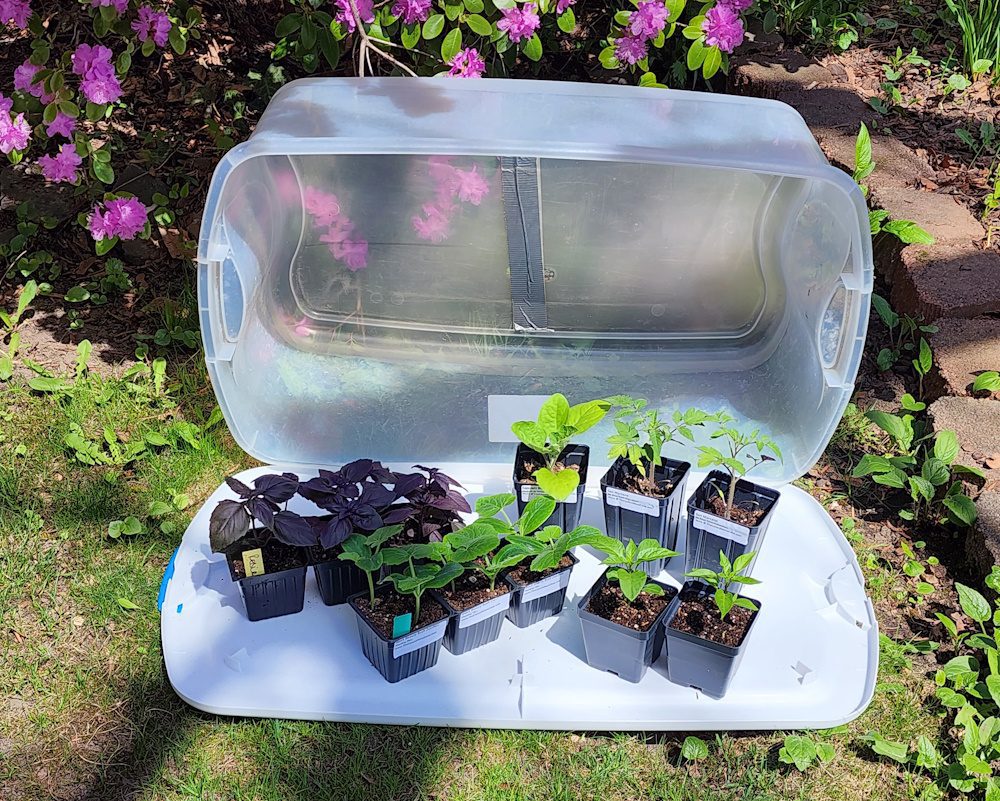The back seat of your car is chock-full of plants. Yippee!! But, it’s still April… uh oh. Now what??
Box-stores, home centers, Costco, and even some nurseries, are bursting with beautiful summer flowers, herbs, and vegetables. And gardeners are eager to get planting; a list of “must-have plants” in one hand and a trowel in the other!
It’s really hard to resist buying plants now, especially when you know that they may not be around later in the season. I get it, but just because these plants in stock now, doesn’t mean it’s time to plant them.
If you find yourself succumbing to the “gotta-have-it-now-it-won’t-be-here-later” urge, make sure you’re prepared to babysit delicate, warmth-loving plants for a few weeks (or more) until the planting conditions are right for each particular plant.
Plan to “Hold” Tender Plants for a Few Weeks
In case I wasn’t clear… now IS NOT the time to plant warm-season* plants in northern Idaho! But if your plant purchases have been hardened off (acclimated to the outdoor environment) you can hold plants outside until the right time for planting later in the spring. Most plant vendors will have hardened their stock before selling, but it’s always a good idea to ask.
Hold plants outside during the day in a well-protected area out of direct sunlight and wind. In the evening, move plants inside a garage or other protected area out of the danger of frost. Avoid bringing hardened off plants into the house for an extended period. Make sure to keep the soil in the plant’s pot moist during this transitional period as well.
When to Plant
In Coeur d’Alene, our last average day of frost is May 15th. Note the word “average.” That means frost can happen anytime up to May 15th or after. If you live in the outlying area, your frost date may be the end of May (Google “frost date” with your zip code to find out your date).
Warm-season veggies, herbs, and flowers need warm soil and air temperatures to thrive. Wait until the soil has warmed and the overnight temperature is consistently at 50 degrees before planting these crops. Even then, you’d be wise to keep some frost protection handy.

What about cool-season vegetables like lettuces, peas, onions, greens and brassicas? Most of these plants can withstand a light frost, therefore, they can be planted earlier in the spring once the soil is workable.
Have Frost Protection at the Ready
Protect warm-season crops and newly planted cool-season seedlings from cool spring temperatures or late frosts with items like row covers, cloches, or plastic gallon milk jugs. Large, clear plastic tubs also work wonders and create mini-greenhouses.

Another option is to construct a simple cold-frame from scrap lumber and recycled windows. If you grow in raised beds you can easily make a low-tunnel hoop house with PVC pipe and 6 mil plastic sheeting. These are particularly good solutions for protecting warm-season plants – not only from cold, but also the wind.

Since they are planted in April, cool-season seedling transplants will benefit from a floating row cover is frost is predicted, but once they have established, protection isn’t necessary.

So, go ahead, load up the wagon with as many summer plants as you like – just be prepared to care for them for a few weeks, and whatever you do, don’t plant them in April!
*Warm-season plants include vegetables like tomatoes, peppers, eggplant, squash, cucumbers, and basil; most summer annual flowers like petunias, coleus, geraniums, dahlias, zinnias, and those stunning summer hanging baskets.


Leave a Reply